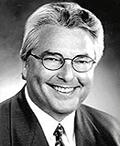Dodge City Meets Pakistan
by Eric Margolis by Eric Margolis Recently by Eric Margolis: Kashmir: Three Minutes From NuclearWar
Bob Woodward, the investigative reporter of Watergate fame, has a new book, Obama’s War, that gives new insights into the White House’s struggle over Afghan War policy.
Woodward’s most interesting revelation: the US Central Intelligence Agency is operating a secret, 3,000-man Afghan mercenary force whose mission is assassinating Taliban and al-Qaida fighters.
The hunter-killer force described by Woodward was set up to operate inside Pakistan, where US troops are officially not allowed to go. The mercenaries are mostly Afghan Tajiks, Uzbeks, and Hazara — all traditional enemies of the majority Pashtun — as well as renegades, common criminals, and mercenaries.
Their raids into Afghanistan’s tribal territory are sometimes coordinated with CIA’s intensifying drone attacks on Pakistani tribesmen that are causing heavy civilian casualties.
CIA also runs its own secret militias in southern Afghanistan and, reportedly, in Tajikistan and Uzbekistan.
We are also just receiving reports of a major US airstrike and special forces ground operation inside Pakistan. The target was the Haqqani guerilla network, a former major US ally during the 1980’s.
To what degree, if any, CIA’s killer units cooperate with US Special Operations Forces, who have the same assassination mission, is unknown. CIA’s assassination campaign in Afghanistan and Pakistan is based on the agency’s successful campaign in Iraq that decimated Iraqi resistance groups.
These Afghan guns for hire are richly rewarded by local standards and boast of high enemy body counts. Neither the US-installed Afghan government in Kabul or Pakistan’s government has any control over these paramilitary forces.
Crimes, atrocities and mistaken killings committed by CIA’s Afghan mercenaries go unreported and unpunished. They are a law unto themselves, with no apparent links to the US military command in Afghanistan. In addition, various other groups of US mercenaries and assassins from private "contractors" like the former Blackwater are also operating in Afghanistan and Pakistan, as well as Iraq.
The result is a dangerous, confusing mle of hired gunmen, US special forces, militias, and government troops — an Afghan/Pakistani version of America’s wild Dodge City.
No one should be surprised by the news that US-led mercenaries are crossing into Pakistan and killing Pakistani Pashtun tribesmen as well as Taliban and even an occasional al-Qaida member. This writer has received reports of the hunter-killer force for years. It’s an open secret in Islamabad and Kabul.
Pakistan’s government has turned a blind eye, or even quietly approved US-led troops violating its sovereignty and assassinating its citizens. Islamabad also permits US drones to stage lethal attacks across the tribal zones of northwest Pakistan without any prior approval.
In fact, the US has a long record of using mercenaries in its wars.
During the Vietnam War, CIA created mercenary forces of Hmong and Meo mountain tribesmen (Operation Hotfoot) and ethnic Chinese Nungs to hunt and kill Vietcong cadres.
They formed part of CIA’s notorious Phoenix Operation that reportedly assassinated some 26,000 Communist cadres and sympathizers. The head of this operation, William Colby, went on to become CIA director.
CIA mercenaries were also used during the 1980’s in Nicaragua and El Salvador’s brutal conflict between rightists and Marxist rebels. El Salvador’s ruthless death squads were highly effective in liquidating leftists, as I saw while covering these conflicts
The model of El Salvador’s death squads was transposed to Iraq, where mercenaries, criminals and renegades were used to liquidate Sunni resistance groups.
The Soviets also used similar tactics during their occupation of Afghanistan from 1979—1989. Gangs of ferocious Uzbek mercenaries know as "Jowzjani" were sent to slaughter Pashtuns resisting Soviet occupation. Other gangs of Tajik and Uzbek fighters were employed by Moscow to stir ethnic discord.
Concern is growing in the United States over CIA’s rapidly increasing paramilitary role in Afghanistan and Iraq — to which Yemen, Somalia, Sudan, Kenya, Uganda and West Africa are now being added.
Many intelligence professionals warn that CIA’s primary role of providing unbiased intelligence to the president is being undermined by its growing combat mission. Once your men and "assets" are involve in assassinations and fighting, it’s very difficult to remain objective, detached and neutral. An institutional bias quickly sets in.
 The US State Department is also taking on a paramilitary role in Iraq, risking the same clouding of its judgment. It’s worth recalling that State Department Intelligence was the only US agency that had the courage to oppose Bush’s unprovoked war against Iraq.
The US State Department is also taking on a paramilitary role in Iraq, risking the same clouding of its judgment. It’s worth recalling that State Department Intelligence was the only US agency that had the courage to oppose Bush’s unprovoked war against Iraq.
The US military is highly displeased by CIA’s paramilitary role, accusing the agency of being "cowboys" and "armchair warriors." Some veteran CIA staff are also dismayed, claiming their job is to think, not to kill.




